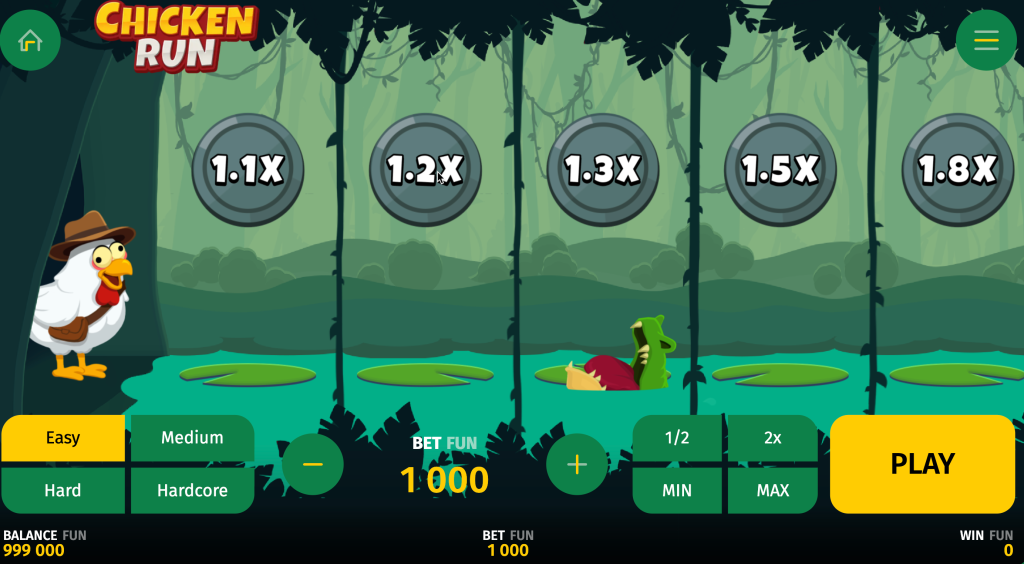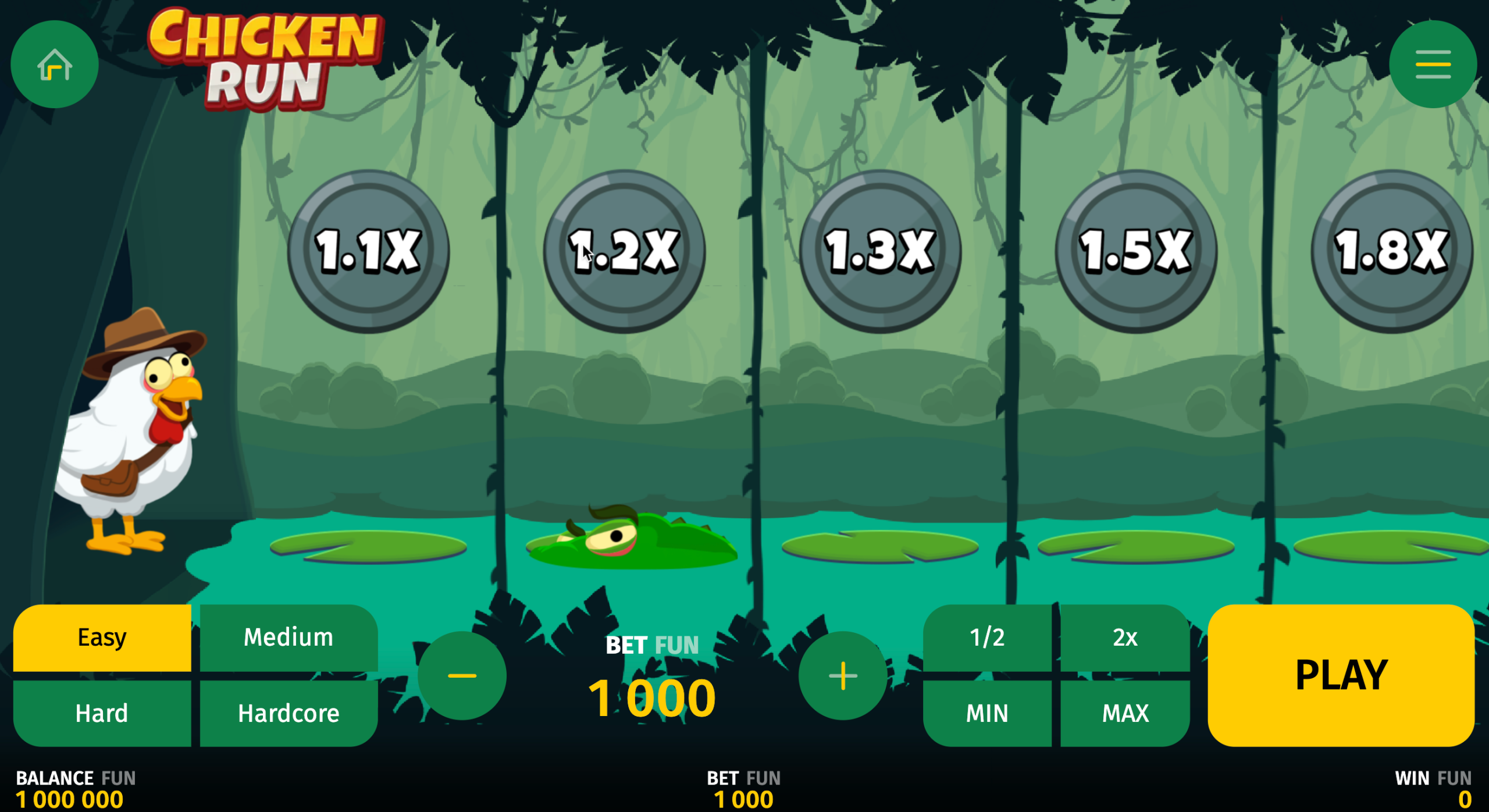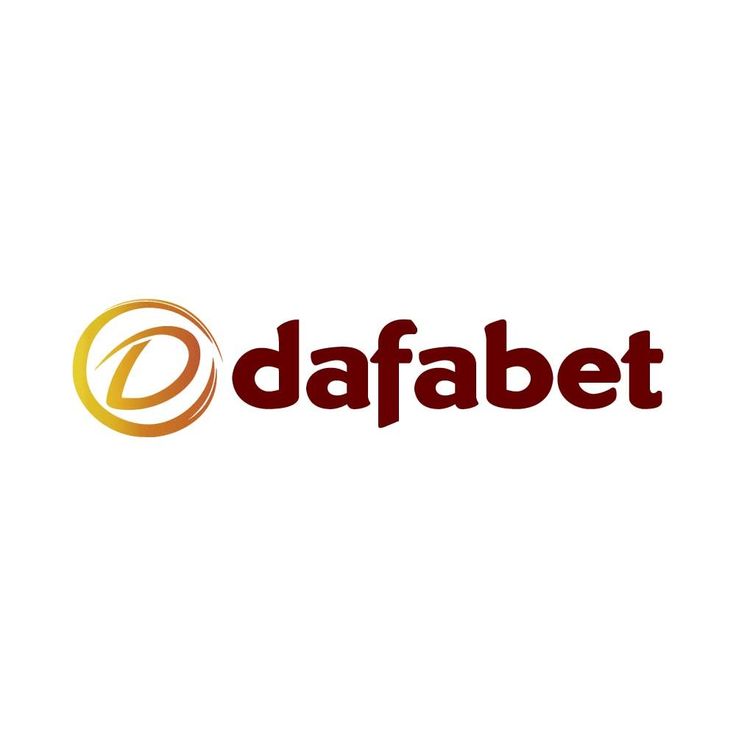Chicken Run game by PoggiPlay Review
Chicken Run game is a turn-based ladder where a cartoon bird hops across columns, multipliers climb each step, and a hidden fail state can end the run in an instant. PoggiPlay frames it as a sharp, readable push-your-luck title with four difficulty modes, a published 95% return, a max exposure of 5,000x, and a flexible stake band from $0.11 to $110 per round. The overview below focuses on what matters in play: rules that stay visible, risk that ramps quickly, and decisions that reward discipline.
The core loop is compact – advance, evaluate, and either bank or keep going – yet the pacing invites meaningful judgment. Difficulty settings compress or stretch the track, changing the feel from gentle experimentation to knife-edge climbs in Chicken Run game. A clear multiplier ladder and immediate feedback make the session arc easy to grasp for newcomers while still interesting for seasoned bettors who test cash-out rules and variance buffers.
Developer background and release information about Chicken Run
PoggiPlay enters the ladder niche with a build that favors legibility and responsiveness over flashy add-ons. The studio documents a simple premise: escalating multipliers mapped to discrete steps, with failure probabilities accumulating as the run advances. That timing creates compact sessions that suit brief play windows and consistent tracking. The launch arrived alongside renewed interest in crash gambling, but this design keeps a deliberate, turn-based cadence instead of a server-driven race. In the broader catalog, Chicken Run casino game sits where choice quality matters more than feature count, giving operators a dependable, lightweight integration and giving players an honest view of the risk curve.
Gameplay mechanics and features
The rules stay transparent: a track of columns, a growing multiplier, and a binary decision at each stop. That clarity enables quick familiarity while preserving suspense; the crash point remains hidden, but nothing else does. Round controls – halve, double, min, max – allow easy stake tuning between attempts. The tempo leans toward a fast-paced gambling game without ever feeling rushed, because the server waits for the next move rather than forcing one. That structure highlights casino game mechanics rather than spectacle, letting bankroll policy and timing define outcomes more than luck streak narratives in Chicken Run casino game. It preserves a consistent heartbeat that never buries the player in interface clutter.
Levels of difficulty and game progression
Four presets – Easy, Medium, Hard, Hardcore – reshape both track length and payout gradient. Early rungs on gentler modes offer modest increments that invite cautious banking; tougher modes shorten the path but steepen the climb, concentrating risk into fewer, heavier steps. From an analyst’s perspective, the build embodies a multiplier betting game with convex rewards that accelerate at later columns. That curve feels like a progressive multiplier arc: harmless at first, bracing at the top. Because ladder length and step size change by mode, the same stake can create very different emotional profiles, while the underlying math remains consistent. Within this frame, Chicken Run casino game becomes a compact classroom for timing discipline.
Risk and reward dynamics
Outcomes hinge on cash-out timing. Early exits protect bankroll and smooth variance; late grabs can multiply returns – or wipe several modest wins at once. Treating decisions as risk and reward gameplay keeps the focus on known trade-offs instead of hunches. Advanced players pre-commit to rung targets, enforce loss caps, and review logs. That’s textbook strategic risk management, and it matters here because late-step exposure dominates long-run distribution. When impulse replaces policy, the steep section of the curve punishes hesitation. In short, Chicken Run casino game rewards restraint more often than bravado.
Practical safeguards for disciplined play
- Position sizing: fixed fraction of bankroll per attempt.
- Loss caps: session stop-loss and daily drawdown limits.
- Target rungs: pre-set cash-out checkpoints for each mode.
- Journaling: rung reached, stake, result, bankroll delta.
- Cooldowns: timed breaks after clustered busts.
- Segregation: reserve bank separate from active stake.
Two or three sessions with these rails quickly build a clean dataset that shows which thresholds hold under stress. Over time, those records become more valuable than any hunch, because variance clusters in the upper rungs can distort short memory. Keeping the policy visible prevents quiet drift into riskier behavior in Chicken Run casino game.
RTP, Volatility, and maximum win potential
The published RTP is 95%, which implies a predictable house edge and an expected long-run loss of five cents per $1 wagered, before the effects of timing discipline. Difficulty presets effectively tune variance: Hardcore compresses steps and inflates late multipliers, turning the experience into a high volatility game. The ceiling is 5,000x on the top rung, which serves as a practical casino jackpot potential even though it isn’t pooled or progressive in the jackpot sense.
| Easy | Medium | Hard | Hardcore |
| 1.1x | 1.2x | 1.4x | 1.6x |
| 1.2x | 1.5x | 2x | 2.5x |
| 1.3x | 1.7x | 4x | 5x |
| 1.5x | 2x | 8x | 10x |
| 1.8x | 3x | 15x | 50x |
| 2x | 4.5x | 30x | 500x |
| 2.5x | 6x | 70x | 1250x |
| 3x | 8.5x | 150x | 2500x |
| 4x | 12x | 400x | 3750x |
| 5.5x | 20x | 800x | 5000x |
Because late multipliers in Chicken Run casino game dominate outcomes, bankroll tests need enough trials to stabilize results. It’s rational to pair smaller targets with more rounds, harvesting modest gains while keeping ruin exposure short.

Player interaction and strategy
Session flow is deliberate: stake selection, mode choice, first move, then a repeating fork – bank or continue. Because state carries forward after each safe leap, every decision changes the stakes of the next one. That’s where this game of chance and strategy finds its rhythm: consistent rules, compounding tension, and a clear sense of responsibility for timing. Logs that capture rung, stake, and outcome help quantify behavior. With that feedback loop in place, Chicken Run crash game becomes a platform for habit building rather than a venue for improvisation. This continuous decision chain keeps players mentally engaged, as each round provides immediate feedback on the chosen strategy. The clear cause-and-effect relationship between action and outcome makes it easier to identify patterns in personal playstyle. Over time, this recognition often encourages a shift toward more structured decision-making, reducing the influence of impulse.
Decision-making process and risk management
Solid habits start before the first click. Pre-commit to stake size and exit rung, and don’t renegotiate mid-run when a near miss stings. That’s the practical edge of gambling strategy in Chicken Run game online gambling: repeatable rules that prevent impulse escalations. When a bust lands, halt, record, and cool down before the next attempt. Over many sessions, the combination of fixed fractions and strict targets usually outperforms sporadic hero runs. In this environment, the game turns from spectacle into a measurable process. Consistency in applying these pre-set rules often leads to more predictable bankroll behavior, even in a volatile environment. Recording outcomes and reviewing them later helps spot subtle leaks in the strategy that may not be visible in the heat of play. By treating every decision as part of a long-term experiment, players of Chicken Run can refine their approach and adapt without abandoning their original risk controls.
Comparison to traditional slots vs Chicken Run crash game
In traditional slot machines, the risk is hidden inside symbol tables and feature cycles. With ladders, the risk is revealed step-by-step as each decision is made. A reel-based online slot spreads out the ups and downs over many spins and often depends on bonus rounds. This online casino slot instead puts the decision at the heart of the action. It’s most similar to an online crash casino game, but instead of running in real time, it moves at a turn-based pace. That difference matters – without a ticking clock, players of Chicken Run usually make better choices under pressure. In game terms, it works like a casino multiplier game without the flashy distractions of online slot with bonus features. For those strict about definitions, yes – it’s still a crash game, but one where the player controls the timing. In that context, the crash game proves that a simple setup can still create challenging, meaningful choices.
Visuals and user experience in the Chicken Run
A playful jungle-swamp theme frames each jump, with crisp animations and a cheeky predator lurking below. The interface keeps its promises: multipliers are legible, buttons do what they say, and the state of play is always visible. Audio cues rise with risk, accenting tension without hijacking attention in Chicken Run. The client delivers stable performance across screens, behaving like an interactive online gaming shell that prioritizes feedback and clarity. Inside that wrapper, the game reads as a confident, lightweight build made for frequent, short sessions.
Graphic style and design aesthetics
Cartoon art sells the stakes without visual noise, and color contrast keeps the track readable even on small displays. Subtle effects punctuate each safe landing, while loss events are signaled cleanly – no visual ambiguity about what just happened. Fonts remain sharp at tiny sizes, supporting one-handed play in transit. Technically, the client sits in the HTML5 slot game family, so compatibility is broad and patching is straightforward. The style never fights the math, and Chicken Run benefits from that restraint by keeping the player’s attention on decisions rather than distractions.
Casino integration and online availability
Operators get an easy hook: standard wallet calls, round logging, and modest QA scope due to the absence of autoplay and dual-bet layers. Because the footprint is small and the state transitions are predictable, uptime stays high and support tickets stay low. On catalogs that care about portability, the title functions well as a mobile casino game with real-time responsiveness and clean resuming after brief interruptions. From an operator’s perspective, Chicken Run gambling game fills the “fast, legible, risk-forward” slot in a lineup dominated by reels.
Best casino platforms and betting range for Chicken Run
In practice, the stake floor of $0.11 encourages trial runs, while the $110 ceiling supports controlled high-exposure experiments. That spread enables position sizing at 0.5%–1% of a mid-sized bankroll, a range that many testers consider sustainable for long trials. Catalogs that tag volatility and publish help panes reduce mismatched expectations, especially on Hardcore where variance clusters. Because the session loop is short, operators with robust histories and ledger views make post-session analysis clearer. Against that backdrop, Chicken Run game finds a pragmatic home that respects both curiosity and caution.
Gizbo Casino
Gizbo’s lobby surfaces ladder mechanics alongside reels, making discovery predictable rather than buried. The cashier is quick, and the history view captures rung-by-rung outcomes that analysts value when reviewing exposure. Mobile handling of stake sliders feels precise rather than jumpy, avoiding accidental overbets. With those rails in place, the game delivers compact sessions that generate honest data without friction. Over time, those histories expose which targets hold steady and which crumble under stress.
SOL Casino
SOL’s category filters and pinning tools suit habitual testers who revisit the same mechanics. Load times remain consistent during peak hours, preserving rhythm between rounds in Chicken Run game. The help center explains difficulty tiers in plain language and links directly to rule sheets. As a result, the game lands in an environment where its no-nonsense design feels like a strength rather than a limitation. Clear interfaces reduce cognitive overhead, which tends to raise cash-out quality.
Dafabet
Dafabet segments catalogs by volatility, giving push-your-luck titles a distinct lane. Round logs summarize stake, rung, and outcome, which is all the telemetry needed for lightweight analysis. Because the PWA copes well with brief drops, runs don’t feel fragile in everyday conditions. These small details stack up to a platform where Chicken Run game plays as intended: quick, readable, and unforgiving when discipline slips. The combination supports short, intentional sessions over open-ended trials.
Parimatch
Parimatch overlays sensible tooltips – average session length, common cash-out points – without obscuring the screen. Verification and cashier flows don’t derail momentum between tests. Analytics dashboards make it easier to compare day-to-day ROI and variance across difficulty modes. The game becomes a handy risk workshop that also entertains. The platform treats information as an ally, which fits the title’s transparent nature.
BC.Game
BC.Game’s breadth doesn’t hinder evergreen titles; indexing and search keep navigation fast for Chicken Run game players. Stake changes register instantly, which matters for frequent restakes. Bonus frameworks generally avoid interfering with outcomes, letting logs reflect decisions rather than temporary modifiers. That stance helps gambling sessions stay clean for later review. Over time, the stability of these records matters more than any flashy wrapper.
How to play Chicken Run?
Set a stake that fits bankroll policy, select a difficulty that matches variance tolerance, and begin the run. After each safe hop, compare the current multiplier to the pre-committed exit rung. If the plan says bank, bank. If the plan says one more step, proceed and accept the outcome without renegotiation. Between attempts, keep the stake sizing fixed unless a drawdown threshold requires a reduction. With this cadence, Chicken Run gambling game becomes a repeatable process rather than a series of impulses.
Round sequence, compressed into essentials
- Stake sizing aligned with bankroll fraction.
- Mode selection based on variance appetite.
- First hop to confirm baseline multiplier.
- Cash-out decision at the target rung.
- Ledger note: stake, rung, outcome, bankroll delta.
- Cooldown timer after consecutive busts.
This six-point loop anchors consistent play and simplifies review. It also surfaces whether targets are realistic for each mode, which is often the difference between a tolerable losing day and a compounding drawdown.
Who should play Chicken Run?
This ladder is ideal for players who like short, focused sessions with clear results and a clean game record. Chicken Run also fits a casual gambling game, where It needs to be easy to understand within seconds but still engaging for multiple rounds. The design balances simplicity with meaningful outcomes, rewarding steady play over risky moves, while helping players develop timing skills that apply to other games. Technically, it blends elements of “push-your-luck” with structured risk, using straightforward math and a fast pace. The game becomes both a solid learning tool and a lively space for quick experiments – always keeping the big decision at the heart of the action.



